When your computer boots up, the BIOS or UEFI firmware loads first, initiating a process to fetch the operating system (like Windows or Linux) from storage (usually a hard drive or SSD) into RAM, where it can run efficiently. Because the operating system is loaded in RAM, its speed is crucial. When some users tried checking the RAM speed from Task Manager and Command Prompt, they found that they did not match. In this post, we will see what you can do if the wrong RAM Speed.
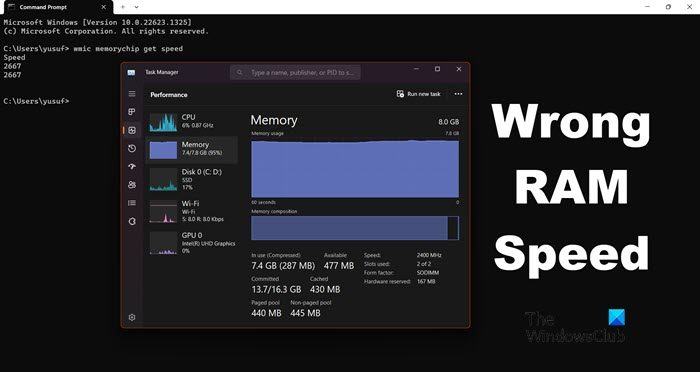
Fix the wrong RAM Speed on Windows 11
The command wmic memorychip get speed is used to identify the RAM speed. One can do the same from the Task Manager. However, for some users, the speed is not matching. If you get the wrong RAM Speed on your device, you can do the following things.
- Understand why there is a mismatch in RAM Speed
- Check your BIOS settings
- Use CPU-Z to check RAM Speed
- Enable the XMP profile
- Configure the voltage and frequency manually from the BIOS
Let’s get started.
1] Understand why there is a mismatch in RAM Speed
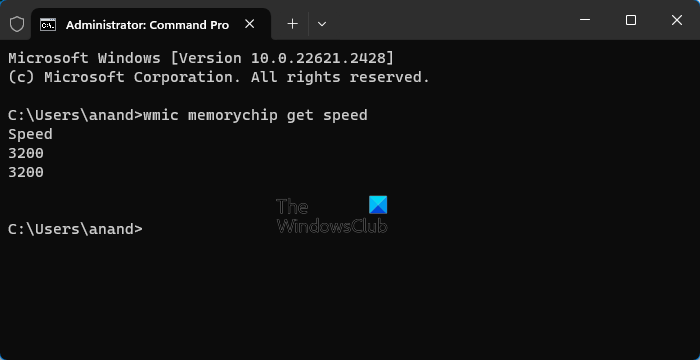
If the WMIC command says that your RAM speed is 3200 MHz and the Task Manager says 1600 MHz, that’s because it’s Double Data Rate. When you multiply 1600 by 2, it gives 3200, which is what you see in the Command prompt.
In case you don’t get the exact double, but something else, it is probably due to the fact that your system is using XMP (Extreme Memory Profile) to run the RAM at a higher speed than the default speed.
Read: Installed RAM not showing up in Windows 11
2] Check RAM Speed from BIOS
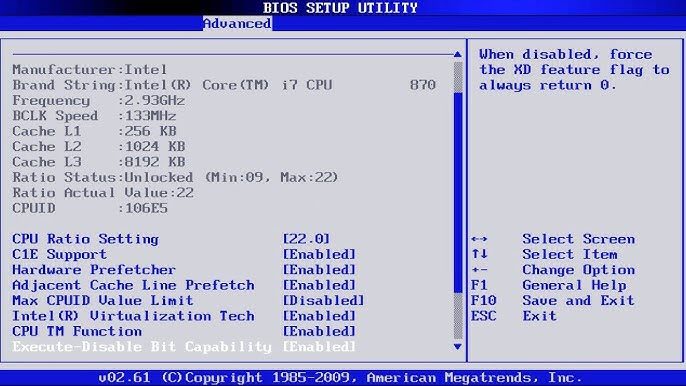
While booting, the BIOS (Basic Input/Output System) firmware initializes computer hardware to make it easier for the operating system and hardware to communicate with each other. To get the correct RAM speed. Always opt for BIOS as it is capable of getting the correct RAM speed. You can follow the steps mentioned below to check RAM Speed from BIOS.
- Start your computer and enter into the BIOS.
- When you enter into the BIOS, go to the Advanced mode.
- In Advanced mode, look for Memory Frequency here It will show you the correct frequency.
There, you can see the correct RAM speed.
3] Use CPU-Z to check RAM Speed
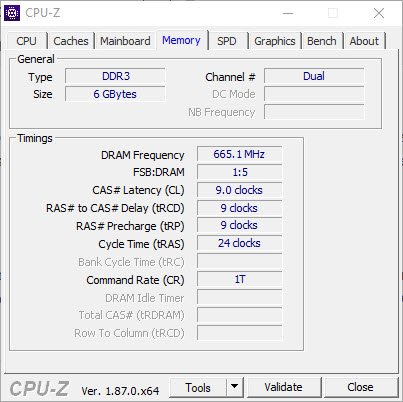
CPU-Z is a free tool that allows you to monitor your system thoroughly. You need to download CPU-Z, go to the Memory tab, and then check the DRAM Frequency. Since it is an independent third-party tool, it will show the correct RAM speed.
3] Enable the XMP profile
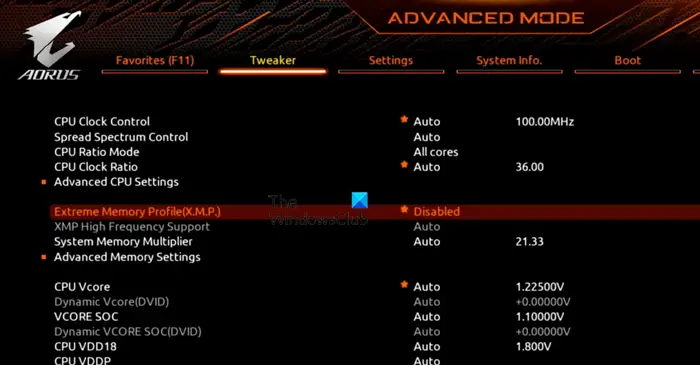
Computer memory modules have a function called XMP (eXtreme Memory Profile) that makes it simple to overclock and optimize RAM performance. Users can enable XMP profiles in the BIOS to use predefined memory settings to improve RAM performance without making manual adjustments.
Follow the steps to enable the XMP Profile (this guide is for ASUS motherboards, but you can get an idea from here or search on the Internet for your motherboard).
- Restart your computer and press F2 or Del key to Enter into the ASUS motherboard BIOS.
- Now go to the Ai Tweaker option.
- Here, set the Ai Overclock Tuner to XMP and select the desired profile.
- Now press the F10 key to save the configuration.
Hopefully, the wrong RAM speed issue will be resolved now.
4] Configure the voltage and frequency manually from the BIOS
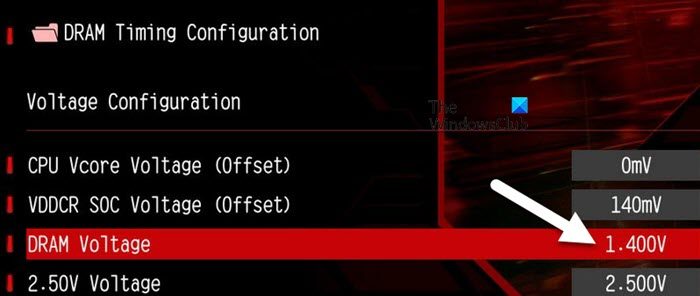
If you are enable to resolve the issues after using all the above solutions then you can enter into the BIOS settings and manually modify voltage and frequency settings. You can follow the steps mentioned below to do the same.
- Enter into the BIOS.
- Now, navigate to the OC Tweaker.
- Look for DRAM Frequency and DRAM Voltage to set them as per your requirement.
Once done, exit BIOS and load your computer. Hopefully, your issue will be resolved.
Hopefully, you can resolve the issue using the solutions mentioned in this post.
Read: How to enable Readyboost in Windows?
What is my RAM speed in Windows 11?
RAM speed depends on the model of the stick, motherboard, and other configurations made by the OEM. If you want to know yours, just open Command Prompt and run wmic memorychip get speed. However, it is not the only method. If you want to know some other methods, check our guide to check RAM speed.
Read: More RAM vs Faster RAM for gaming or video editing?
Why is my RAM usage so high on Windows 11?
RAM usage can be high due to the overcrowding of many internal processes, due to which one will notice a significant drop in the performance of their system, especially when it comes to multitasking. We recommend you check our guide to know why is my RAM usage so high when nothing is running.
Read Next: How to Free up, Reduce or Limit RAM usage in Windows.
Leave a Reply